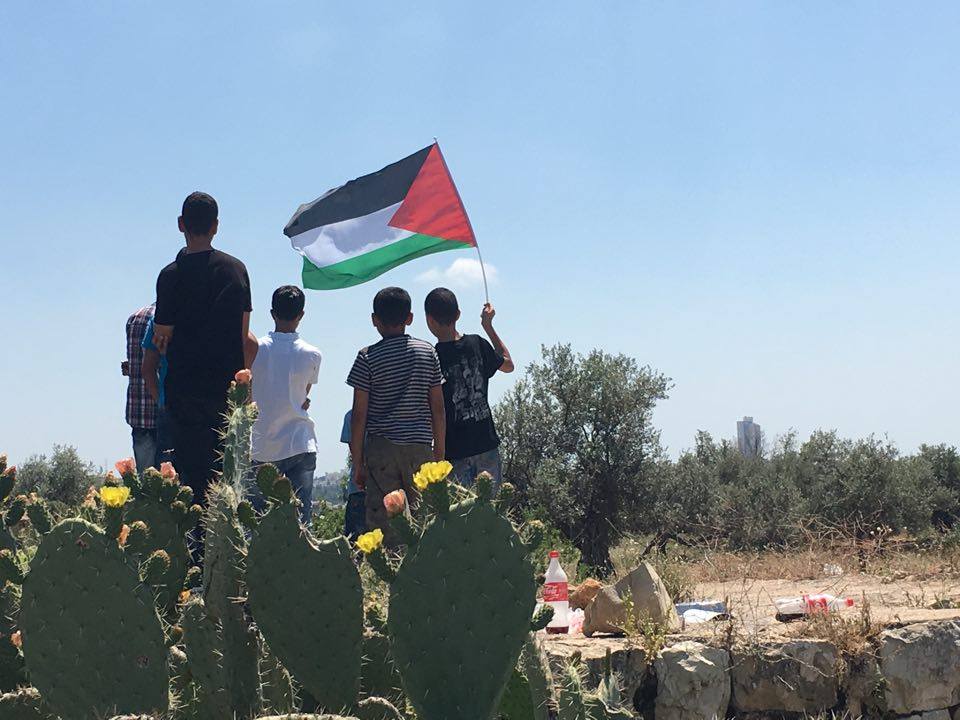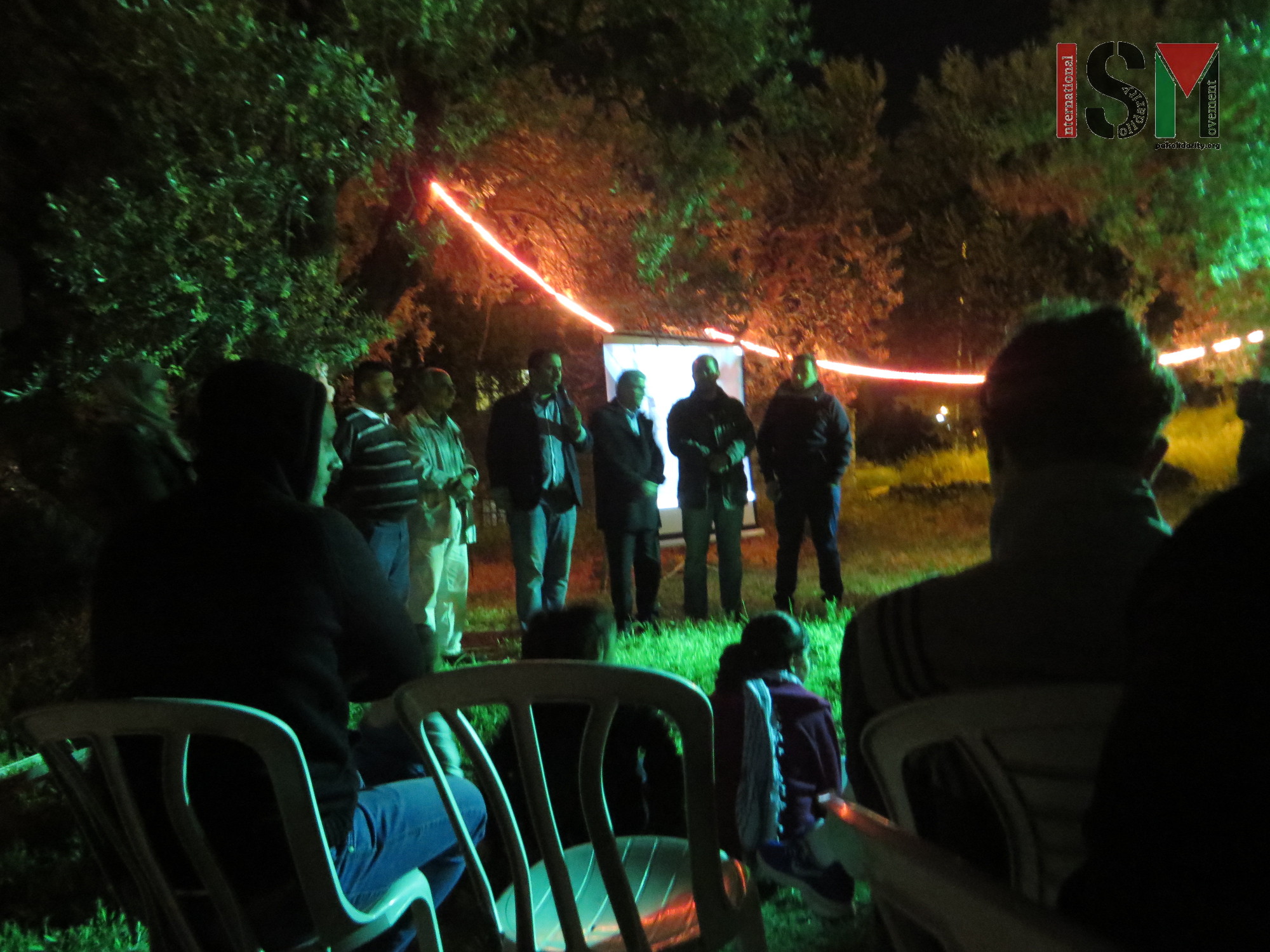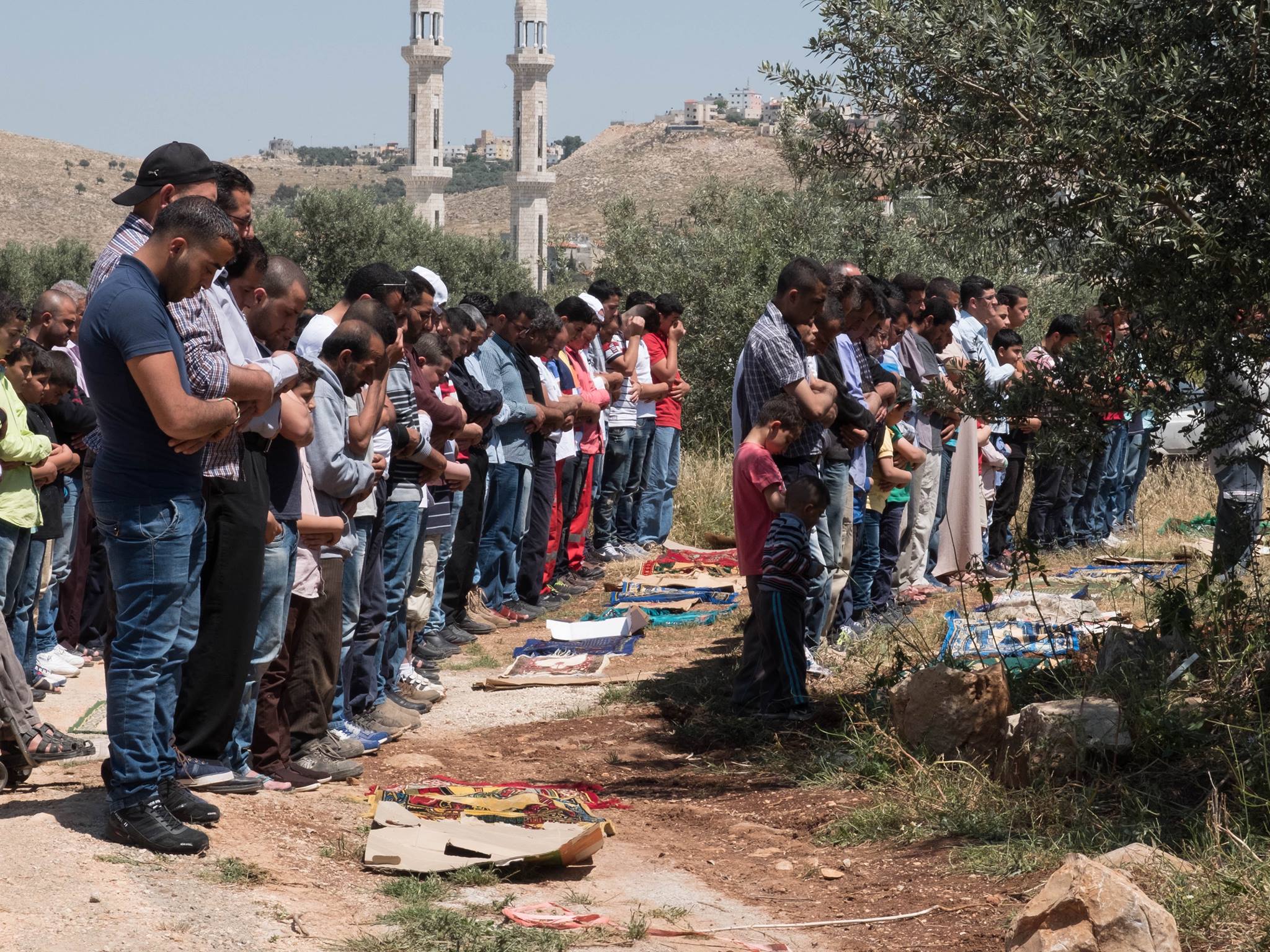Tag: Apartheid Wall
-
Israeli forces attack weekly protests in the West Bank
2nd May 2016 | International Solidarity Movement, al-Khalil team | Deir Istiya, Kafr Qaddum, Ni’lin; occupied Palestine Last week, as every week, Israeli forces attacked demonstrations in the West Bank against the illegal Israeli land-theft, the apartheid-wall and illegal Israeli settlements. In Deir Istiya, near Nablus in northern occupied West Bank, farmers continued their protest…
-
Closing of 7th annual Open Shuhada Street campaign
28th April 2016 | International Solidarity Movement, al-Khalil Team | Hebron, occupied Palestine On the 27th of April 2016 Youth Against Settlements hosted the closing event of the annual campaign “Open Shuhada Street”. This year was the 7th year of the campaign, and YAS is determined to continue the success. This year more then 155…
-
Non violent protest in Ni’lin once again met with violence
15th April 2016 | International Solidarity Movement, al-Khalil team | Ni’lin, occupied Palestine On Friday, the 15th of April 2016 – and as part of a West-Bank wide protest for Prisoner’s Day – the villagers of Ni’lin held their weekly non-violent demonstration. They were protesting against Israeli apartheid politics, the theft of the villagers land…



